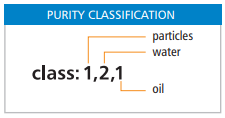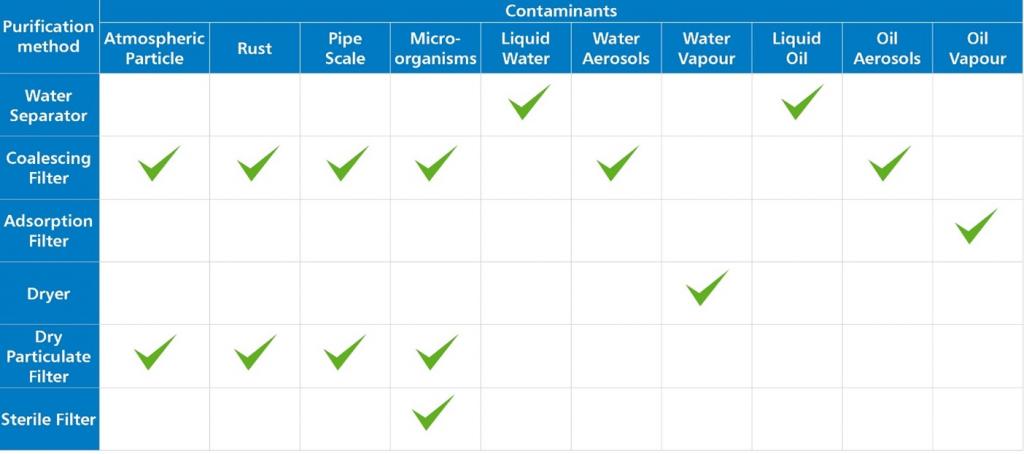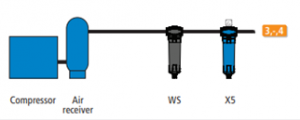What is ISO 8573-1 and How Does it Impacts Your Compressed Air System?
Understanding International Compressed Air Standard ISO 8573-1
Posted on November 26th, 2021
ISO 8573 is an international standard in the United Kingdom, Germany, India and the United States that defines contaminants found within compressed air. It is known as the guideline to understand air purity levels within a compressed air system.
The standard is divided into nine different parts. 8573-1 defines air quality classes based upon specific contaminant types to allow users to determine the appropriate purity levels for any given application. 8573-2 through 9 outline methods to test and quantify an air sample to determine which purity class it falls into. ISO 8573-1 is the most frequently used aspect of ISO 8573, and we will explain it in more depth throughout this blog.
What is ISO 8573-1?
The ISO 8573 group of International Standards is used to classify compressed air quality by describing its contaminants. It also provides test methods and analytical techniques for each type of contaminant.
A compressed air purity classification is achieved by installing specific compressed air treatment equipment. Depending on the use of a compressed air system, the air quality may have to be validated in accordance with the necessary quality class as defined by ISO 8573-1.
The table below demonstrates the purity classes used by ISO 8573-1 to classify compressed air quality. The purity classes define the maximum amount of contaminants that may exist in the air stream.
Your Compressed Air Quality and Purity Class
The ISO 8573-1 standard is split up into three groups, based on the type of contaminants: solid particulates, water (liquid and vapour) and oil (aerosols and vapour). Within each category, there are multiple purity classifications. It is crucial to understand the lower the number, the purer the air needs to be.
It is essential to ensure your compressed air meets the standards required for your application to avoid damage to equipment and product spoilage. Systems that do not meet the required class are risking the quality of the product, the health of staff and customers and even the business’s reputation.
Although it is not a legal requirement to meet ISO standards, it ensures you are installing the right compressed air treatment equipment to produce high-quality end products. If the quality of your compressed air does not meet the necessary standards set by ISO 8573-1, there is a chance that damage will occur to your equipment and end product.
For example, within the food industry, not removing the appropriate level of contaminants can cause food to become spoiled, or bacteria can begin to grow, which can cause consumers health problems.
Understanding the ISO 8573-1 Classification Table
ISO 8573-1 is split into three categories: solid particulates, water (liquid and vapour) and oil (aerosols and vapour). Therefore, when looking for compressed air treatment equipment that is ISO 8573-1 certified, it is essential to understand the classifications. This image shows an example that indicates the filter is Class 1 for particles, Class 2 for water and Class 1 for oil.
 Within each of these three categories, there are different classifications for each contaminant. The lower the number in each category, the higher the purity and the cleaner the air needs to be. For example, within the particles category (see table above), class 5 air can have a maximum of 100,000 particles per cubic metre whereas, class 4 air can only have a maximum of 10,000 particles per cubic metre. Therefore, class 5 air can contain more particles than class 4.
Within each of these three categories, there are different classifications for each contaminant. The lower the number in each category, the higher the purity and the cleaner the air needs to be. For example, within the particles category (see table above), class 5 air can have a maximum of 100,000 particles per cubic metre whereas, class 4 air can only have a maximum of 10,000 particles per cubic metre. Therefore, class 5 air can contain more particles than class 4.
Achieving the different air purity levels can be done with varying methods of purification designed to remove specific contaminants from the air stream. These can be classified as follows:

The below table shows Walker Filtration’s filtration grades and the corresponding air purity classification. For example, Grade XA is a 0.01 micron filter that can remove contaminants from a compressed air system to meet Class 1 for both oil and particulate removal per the ISO 8573-1 standard.

Specification Examples
Below are examples of how different compressed air filters and dryers are used in combination to meet different classifications.
The example below illustrates how filtration is used to accommodate an average quality level. The system is designed to remove bulk liquid and high concentrations of oils, which may contain burnt by-products such as lacquers. The classification shows that this will remove Class 3 particles and Class 4 oil.

The second example below demonstrates a much higher-quality air system. This package provides the user with the best possible compressed air quality. In some cases, specific equipment required to achieve a given air purity class must itself be protected with additional air treatment equipment. For example, the dryer is necessary to meet water content class 2, but it must be protected by a water separator and high-efficiency filter in order to do so efficiently. The classification of this package demonstrates that it removes Class 1 particles, Class 2 water and Class 1 oil.

Choosing ISO 8573-1 Certified Products
At Walker Filtration, we are well-versed in ISO 8573-1 requirements. Our compressed air products are certified, and our sales team can help you choose the best filtration for your system requirements. Contact us today to learn more about our ISO 8573-1 certified filtration products.
